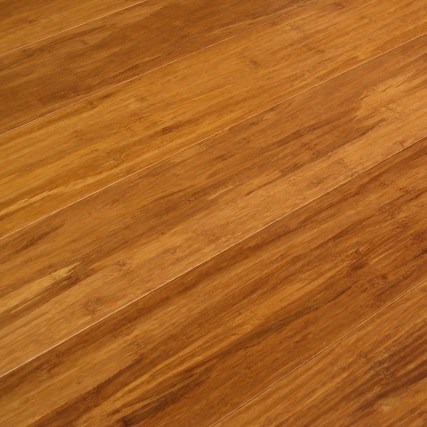Consumers love bamboo wood flooring for its natural beauty, durability, and environmental benefits. Manufacturers have responded to the growing demand by introducing several types of bamboo floors, providing distinct finishes for varied tastes. Find out how to choose between these types and understand the different looks and textures available.
Bamboo flooring is made from grass formed into planks with high-strength adhesive. Standard manufacturing processes involve laminating bamboo stalks together to form a plank. Some bamboo flooring manufacturers offer strand woven bamboo floors, created by weaving the grass together before applying the adhesive.
Tip # 1 – Understand the Manufacturing Process
Strand woven products provide higher levels of durability and may last longer in your home, but they also come at a higher price. Consider the long-term value and location of the floor. Strand woven bamboo floors perform well in high-traffic areas such as entranceways and family rooms, whereas standard bamboo provides lasting beauty at a much better value, ideal for bedrooms and dining rooms.
Tip # 2 – Understand the Different Grain Patterns
Consumers choose between two types of grain patterns when shopping for bamboo wood flooring:
- Horizontal/Flat – This type resembles traditional wood flooring, with nodes or knuckles appearing in random patterns. Flat or horizontal bamboo floors are made by adhering three layers of flattened bamboo together to form planks. This style of bamboo floor provides a calm, natural appearance.
- Vertical – With a more distinct, exotic look, vertical bamboo flooring displays long lines with fewer nodes and knuckles. Instead of flattening the bamboo in a triple-layer fashion, as in horizontal bamboo floors, vertical bamboo flooring is made by adhering multiple pieces of bamboo together vertically. This provides a textured appearance that works well in larger rooms and adds visual interest to any space.
Ask your wood flooring retailer about plank lengths—typically both 3-foot and 6-foot are available. Some manufacturers provide clear bamboo flooring planks, presenting a node-free look. Think about the overall appearance you want and make sure to consider both grain patterns before making your decision.
Tip # 3 – Choose Your Preferred Color
Bamboo has traditionally been available in natural, blonde tones. Manufacturers have perfected the process of caramelizing, which provides a deeper, rich brown or amber color for more dramatic décor. These color choices tend to run at the same price point, although some experts question whether the natural type provides greater durability.
The caramelizing process also referred to as carbonizing, actually stains the bamboo strands to achieve a darker tone. Some industry experts claim that this process weakens the bamboo by as much as 30 percent, although manufacturers argue that stronger adhesives and strict caramelizing process standards help to maintain peak levels of strength.
As long as your preferred color of bamboo flooring comes with the same warranty coverage, questions of durability may not be an issue. Choose the appearance (including both grain pattern and color) that suits your home and decorating tastes. The quality and beauty of bamboo wood flooring provide fantastic value for the investment in every case.
